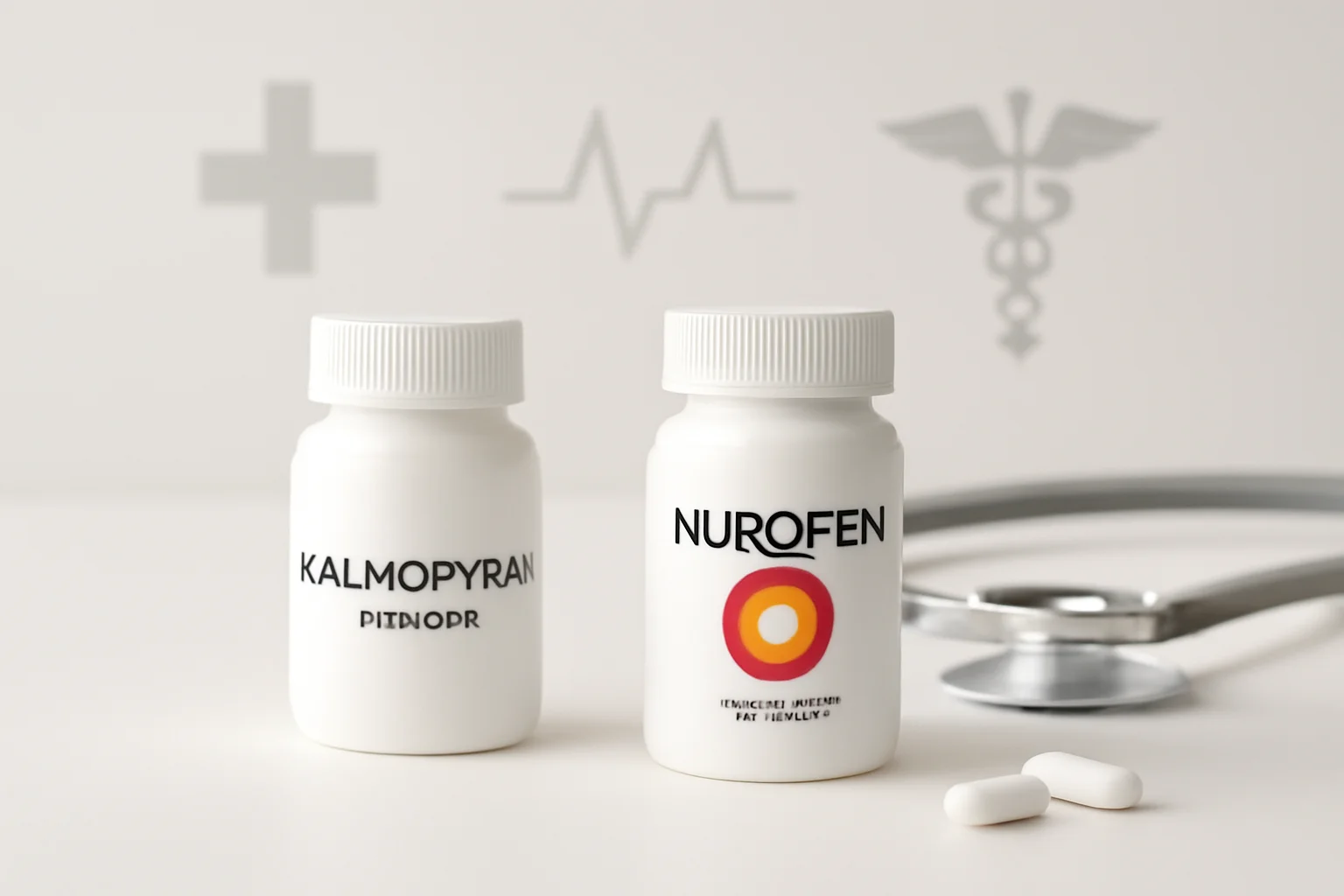
Kalmopyrin or Nurofen: Which is the better choice for pain?
The pain relievers Kalmopyrin and Nurofen are among the most commonly used products. Both are popular in public awareness, but many do not know exactly when and how each preparation can be used most effectively. Many people turn to these medications for pain relief, fever reduction, and inflammation moderation; however, the choice is not always straightforward. People seek pain relievers for various reasons, whether it be headaches, muscle pain, or colds. It is important to choose the right medication, as the active ingredients and mechanisms of action can differ. Additionally, individual sensitivities and potential side effects also influence the choice. The aim of this article is to provide a more comprehensive picture of these popular pain relievers and to assist users in making informed decisions.
Kalmopyrin: Active Ingredient and Application
The active ingredient in Kalmopyrin is metamizole sodium, which is a non-steroidal anti-inflammatory drug (NSAID). This medication is commonly used to reduce various types of pain, such as headaches, muscle pain, joint pain, and fever. The uniqueness of metamizole is that it effectively alleviates pain and fever while also having anti-inflammatory effects, although this is not its primary area of application.
Kalmopyrin is rapidly absorbed, so its effects are felt relatively quickly. It is important to consider that some individuals may be more sensitive to the active ingredient, so it is advisable to consult a doctor before taking it. The most common side effects of Kalmopyrin include gastric irritation, allergic reactions, and changes in blood counts. Long-term use also requires medical supervision, as the use of metamizole has been associated with certain severe side effects, such as agranulocytosis, which indicates a decrease in white blood cell counts.
Kalmopyrin is available in various forms, such as tablets, powder, or injection. The choice depends on the type and intensity of pain, as well as individual preferences. Always read the patient information leaflet before using the medication and adhere to the recommended dosage.
Nurofen: Active Ingredient and Application
The active ingredient in Nurofen is ibuprofen, which is also a non-steroidal anti-inflammatory drug (NSAID). Ibuprofen is a widely used pain reliever that effectively reduces pain, fever, and inflammation. Nurofen is particularly popular for treating fever and pain, such as headaches, toothaches, menstrual pain, and muscle aches.
The anti-inflammatory effect of ibuprofen is based on the inhibition of prostaglandin production, which is responsible for inflammatory responses. The effects of Nurofen generally occur quickly, and the risk of side effects is relatively low when the recommended dosage is followed. The most common side effects include gastric irritation, nausea, and digestive disorders. Prolonged or high-dose use may also affect kidney function.
Nurofen is available in various forms, including tablets, capsules, suspensions, and gels for local application. The product is easily accessible at pharmacies, and many choose it as their primary pain reliever. It is available for both adults and children, but for children, it is always important to adhere to the appropriate dosage.
Before taking Nurofen, it is advisable to be informed about possible contraindications, such as gastric or intestinal diseases, kidney diseases, and heart problems. Medical advice can help in choosing the most appropriate solution for pain management.
Differences and Similarities Between Kalmopyrin and Nurofen
When choosing between Kalmopyrin and Nurofen, it is important to consider the active ingredients, mechanisms of action, and areas of application. Kalmopyrin contains metamizole sodium, while Nurofen contains ibuprofen. Both medications have pain-relieving and fever-reducing effects, but they work differently.
Kalmopyrin has a stronger pain-relieving effect and is generally recommended for more severe pain, such as postoperative pain or cancer-related pain. In contrast, Nurofen is more suitable for milder pains, such as headaches or menstrual pain.
In terms of side effects, the greatest risk with Kalmopyrin affects the blood-forming system, while gastrointestinal issues are the most common with Nurofen. It is important to adhere to the recommended dosages for both medications and to consult a doctor for long-term use.
Finally, individual sensitivities and medical histories should also be taken into account when making a choice. Since both medications have different effects and side effects, consulting with a doctor is the best solution to help make the most appropriate decision.
—
Warning: This article does not constitute medical advice. Always consult a doctor for health issues and follow their recommendations!

